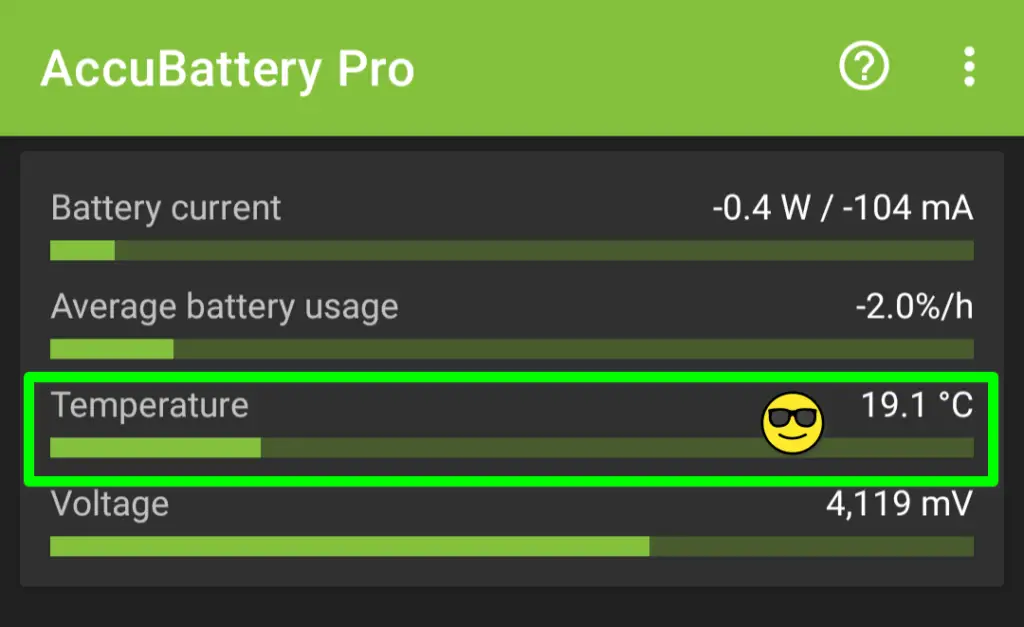As a smartphone user, it’s essential to know if your device might have been hacked. It can be scary to think that someone might have access to your personal information and data. Hacking is a genuine concern in today’s world, where so much of our lives is stored on our smartphones. Here are some common signs that your smartphone might have been hacked:
- Uptick In Unrecognized Calls or Texts
- Increased Number Of Spam Emails
- Spike In Your Data Usage
- Jump In Phone Bill Charges
- Unrecognized Financial Transactions
- Smartphone Performance Drop
- Decreased Battery Life
- Hotter Than Normal Device Temperature
- Smartphone Settings Changed
- Online Accounts Settings Changed
Alone, these signs do not guarantee your device has been hacked, but in combination may indicate a problem. Be on the lookout for the most common sign…

Uptick In Unrecognized Calls or Texts
While it’s not uncommon to receive spam calls or messages, a sudden surge in unknown numbers can be a cause for concern. Suppose you’re receiving calls or texts from unrecognized numbers more frequently than you usually do. In that case, it’s possible that your phone may have been hacked and that your contacts list may be compromised.
Carefully review your phone’s call history in for phone app. It’s easy to track the number of spam calls or messages you receive daily or weekly to identify any unusual spikes. Your default messages app will also show all sent and received texts for review.
Alternatively, your monthly mobile bill should indicate how many calls and texts are passed through your account. Compare the current month with previous invoices to see if there’s an uptick in usage.
Increased Number Of Spam Emails
Like an increase in spam calls or texts, an increase in spam emails may indicate your phone could have been hacked.
Since we all use our smartphones to access email, check your inbox, spam, and sent folders for unrecognized messages. A sudden spike in any of these is cause for concern.
Your contacts list contains a treasure trove of phone numbers and email addresses that can be accessed by malware-infected apps.
Spike In Your Data Usage
Increased mobile data usage or WiFi traffic can indicate your smartphone’s been compromised.
If your device begins using more data or WiFi than it usually does, it could mean that background processes or apps are running on your phone. These hidden processes cause an increase in your data usage, leading to potential overage charges on your monthly bill.
Your mobile OS records internet usage metrics.
For iPhones
- Go to the Settings app
- Tap Cellular or Mobile Data
On Android:
- Go to Settings
- Search for “app data usage”
- Tap the setting option.
Review the breakdown of how much traffic each application is using during a given period. Determine if there are any suspicious or unfamiliar applications consuming excess amounts of data.
By regularly checking your data usage, you can quickly identify any unusual spikes that can point to a compromised device.

Jump In Phone Bill Charges
A sharp increase in your phone bill charges can signify that your smartphone may have been hacked.
Unexpected charges for increased data usage, toll phone calls, or additional text messages can indicate your phone may be compromised.
Luckily, your mobile service provider can typically identify the source of these added costs based on your account activity.
Call your provider and let them know you’re investigating a possible hack of your smartphone. See if they can walk you through your recent activity. Ask them to mark potential overages and begin the process of disputing unauthorized charges.
By working with your mobile provider, you can help ensure that your phone bill accurately reflects your usage and that your personal information is protected.
They can also offer suggestions on preventing future unauthorized charges and securing your device and cellular account.
Unrecognized Financial Transactions
Along the same lines as overages on your phone bill, unrecognized financial transactions can also indicate a compromised cell phone.
Many use online banking websites and apps to handle daily financial responsibilities. But if your smartphone is hacked, abnormal behavior in your financial accounts may help point to your device being compromised.
Similarly to how we contacted your cellular provider, contact your financial institution’s customer service. Inform them that your smartphone may have been hacked, and you’d like to find out what steps can be taken to identify invalid transactions and prevent further losses.
Smartphone Performance Drop
The most common reason a smartphone might slow down as a sign of being hacked is installing an app with malicious code.
Hackers often use malicious apps to access a user’s device and steal personal information. These apps can slow down the device by running unauthorized processes in the background. It’s important to only download apps from trusted sources, such as the official app store, and to read reviews and check the app’s permissions before installing it.
Another reason why a smartphone might slow down is if the device’s operating system is outdated and lacks the necessary patches to protect against exploits. Hackers can exploit vulnerabilities in outdated software to gain access to a smartphone, and the presence of malware can slow down the device as it consumes valuable resources. Keeping your device’s operating system up-to-date with the latest security patches is essential to prevent hacking and protect against performance issues.
It’s important to note that a slow smartphone may not always be a sign of a hack, as other factors can cause a device to slow down.
For example, poorly written apps or website code, having too many apps installed, and low storage can also affect the performance of a smartphone. It’s essential to regularly clean up your device and delete unused apps or data and monitor your device’s performance to identify any unusual slowdowns.

Decreased Battery Life
With excess processing and data transmission comes a faster drain on your smartphone’s battery.
For example, cryptojacking is the unauthorized use of someone else’s device to mine cryptocurrency. This is typically done by installing malware on the device that allows the attacker to use the device’s processing power to mine cryptocurrency without the owner’s knowledge or consent. Cryptojacking can occur on any device, including smartphones, laptops, and servers.
The impact of cryptojacking on a hacked or hijacked smartphone can consume many of the device’s resources, including its processing power and battery life, leading to slow performance, increased data usage, and reduced battery life.
Hotter Than Normal Device Temperature
Additionally, cryptojacking and other process-intensive malware can cause a device to overheat and permanently damage internal components.
When a computer or smartphone is working on tasks that require a lot of processing power, the components inside the device, such as the CPU, GPU, and memory, consume more electricity which has a byproduct of producing heat. The harder these components work, the more heat they generate; if this heat is not dissipated quickly enough, it can build up.
Many devices have a limited capacity for dissipating heat build-up as a trade-off for a small physical profile. Smartphones with cases actually exacerbate the problem by insulating the device and trapping heat inside.
Monitor your device for unexpected temperature variations. A smartphone that has been hacked may exhibit signs through this heat build-up. I use AccuBattery, which includes the temperature, as seen in this screenshot.

Alternatively, you may simply want to pay attention to how your smartphone feels during regular use.
Smartphone Settings Changed
Another sign that your smartphone may have been hacked is if you notice unexpected changes in your device’s settings. This can happen when malware is installed on your phone, and it adjusts your settings to allow it to perform undesirable tasks. These changes could be minor alterations like changes to notifications through more administrative adjustments. If you notice odd changes to your smartphone’s settings, it’s a good idea to investigate further by looking at your recently installed apps.
Mobile operating systems display individual permission request popups when apps attempt to access potentially harmful resources or settings. Unfortunately, users often reflexively grant installed apps permissions without considering the implications.
Some smartphone permission requests are administrative, giving even more control of the smart device. Therefore, you should pause and consider very carefully before allowing this type of elevated permission.
Hackers aim to gain control of your device to steal data, install malware, or use it to conduct other nefarious activities. They can do this by exploiting vulnerabilities in your operating system or tricking you into installing malicious software.
Online Accounts Settings Changed
Our smartphones are increasingly becoming an integral part of our daily lives, and we use various apps to stay connected. However, many apps contain personal and financial information, making them a prime target for hackers.
While app developers take measures to ensure that these apps are sandboxed or isolated, there is always a possibility that threat actors find vulnerabilities allowing them to compromise your online accounts.
One of the warning signs that your smartphone might have been hacked is unexpected changes to your connected account settings.
If you notice any unusual settings changes, contact your online account’s customer support and see if they can help identify when and where the account setting changes were made.
Many online services keep logs of when changes are made to accounts. These records can provide you with information about the location (via IP address) and the time of the change. By getting this information, you can narrow down the time and place of a possible breach and take appropriate steps to secure your accounts.
Like the previous section, ask yourself what apps you recently added and if you recall any edits to the online account.
Note: If you share the account with others, like a spouse or significant other, ask if they’ve made any changes or seen anything odd change on the account.

Steps To Take To Fix Your Hacked Phone
- Get rid of unused apps: Uninstall any apps you don’t use or don’t recognize, as they may contain malware.
- Delete unused accounts: Delete any online accounts that you don’t use or don’t recognize, as they may have been compromised and used to hack into your phone.
- Change account passwords: Change the passwords of all your accounts to something strong and unique, and avoid reusing passwords across multiple accounts.
- Set a new unlock PIN: Change the PIN, password, or passphrase used to unlock your phone to a strong and unique password.
- Perform a force reboot: Restart your phone in a way that clears the memory and removes any malicious processes that may be running.
- Take it to a professional: If you’re still experiencing issues, take your phone to a professional, such as a certified repair shop or IT technician, who can help you identify and remove any malware or viruses that may be present on your phone.
- Go nuclear and do a factory reset: If all else fails, perform a factory reset to erase all data and return your phone to its original state. Note that this step will erase all your data, so back up your important files beforehand.
Tips To Avoid Future Phone Hacks
- Don’t let anyone use your phone, including kids: Keep your phone to yourself to minimize the risk of unauthorized access or malware installation.
- Think before installing new apps, especially sketchy ones: Only install apps from trusted sources, and read reviews and ratings to ensure they’re safe and legitimate.
- Avoid visiting sketchy websites: Be cautious of clicking on links or downloading files from untrustworthy sources, and use a reputable antivirus app to scan for potential threats.
- Don’t use public WiFi without a trusted VPN: If you need to use public WiFi, use a trusted virtual private network (VPN) to encrypt your data and protect your privacy from potential eavesdropping or attacks.
- Don’t use public charging stations or borrowed chargers or cables: Use only your own charger and cable. Avoid charging your phone in public charging stations where hackers could tamper with the charging station to install malware or steal your data.
- Don’t jailbreak your iPhone or root your Android phone: Resist the temptation to modify your phone’s operating system, as doing so can bypass security features and leave your device vulnerable to hacking and malware attacks.
Other Questions You Might Have
Should you perform a factory reset if you suspect your phone has been hacked?
Performing a factory reset should be a last resort if all other methods have failed to remove any malware or viruses present on your phone. This step will erase all your data, so it’s important to back up your important files beforehand. It’s also recommended to take your phone to a professional, such as a certified repair shop or IT technician, before performing a factory reset.
How do hackers gain access to smartphones?
Hackers can gain access to smartphones through various methods, such as exploiting vulnerabilities in the device’s operating system or tricking the user into installing malicious software. They may also use phishing scams or social engineering tactics to obtain login credentials or personal information.
What should you do if you receive a suspicious text message or email?
If you receive a suspicious text message or email, do not click on any links or download any attachments. Delete the message immediately and do not reply to it. If you are unsure whether the message is legitimate, contact the sender directly to verify its authenticity.
Should you use biometric authentication (such as fingerprint or facial recognition) to unlock your smartphone?
Biometric authentication can be a convenient and more secure when using your smartphone in public spaces to help prevent PIN theft. Use a long random set of numbers or alphanumeric characters in addition to biometrics to increase the security of your device and connected accounts.
Can you prevent your smartphone from being hacked?
While it’s impossible to completely prevent your smartphone from being hacked, there are steps you can take to minimize the risk. This includes keeping your operating system and apps up-to-date, using strong passwords and avoiding reusing them across multiple accounts, and avoiding suspicious websites or downloading unknown apps.
